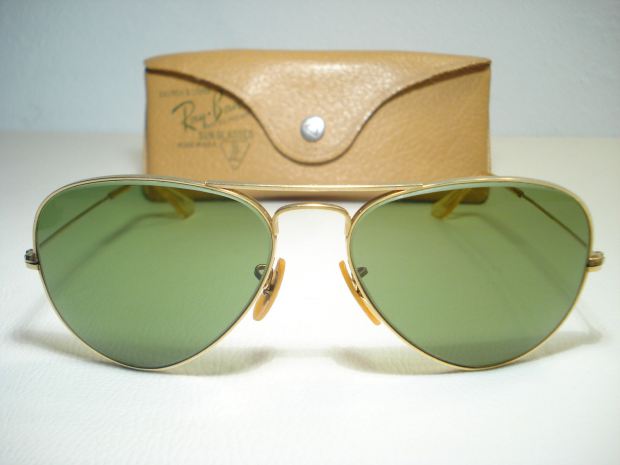
Ray Ban Aviators Photo: Women’s Health
Aviators are an instantly recognizable sunglasses style that became popular in the late 1930s. A company called Bausch & Lomb’s created these glasses for pilots when a test pilot requested eyewear that would filter out the sunlight and glare when they were flying at high altitudes. These glasses were marketed under the name Ray Ban and patented by Baush & Lomb.
These special glasses incorporated a dark anti glare-lens that was tinted green in order to filter out the light without obscuring the pilot’s vision. The oversizedshape of these glasses–which has become so popular with movie stars because they hide the face–was designed to block out as much light as possible. The lens of aviator glasses also have a slightly convex shape, in order to prevent light coming in at any angle.
In the late 1930’s the sunglasses went on sale for civillians across America. However, the design of these shades wasn’t set in stone yet: during the ’30s a gradient tint was added to the lenses. A strong glare-defining coating at the top of the lens made it more difficult for light to come through the lens from head-on and above, but the smaller amount of tint at the bottom of the sunglasses allowed pilot to look down a their instrument panel. This change filtered over into the fashion world as well. The distinctive warm sepia tone of today’s aviator lenses are the result of a change in design made by Tucker Viemeister, who marketed his version of the shades as “Sarengeti” in the 1980s.
We think that aviator frames make a functional and stylish accessory. The oversized and gradient-tinted design is perfect for driving or reading on the beach: you’re protected from light and glare in most directions. SPF protection can make your stylish glasses even more sun-safe. The sepia shade is neutral enough to go with almost anything, and the shape is universally flattering. Style experts usually suggest that aviators look best on square or angular faces, but over the years various designers have altered the shape of the glasses in many ways. There are plenty of fashion-focused aviator designs that are rounder, larger, or more angular than the traditional performance-oriented shape. The classic wire frame is still the most recognizable, but aviator glasses have also taken on patterned, plastic, or thicker metal frames. Because of this, anyone can find some variant of these sunglasses that suits them.


Comments are closed